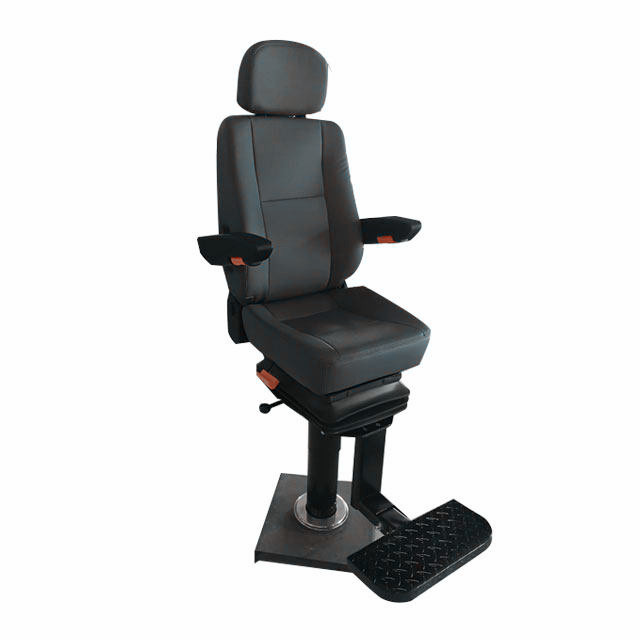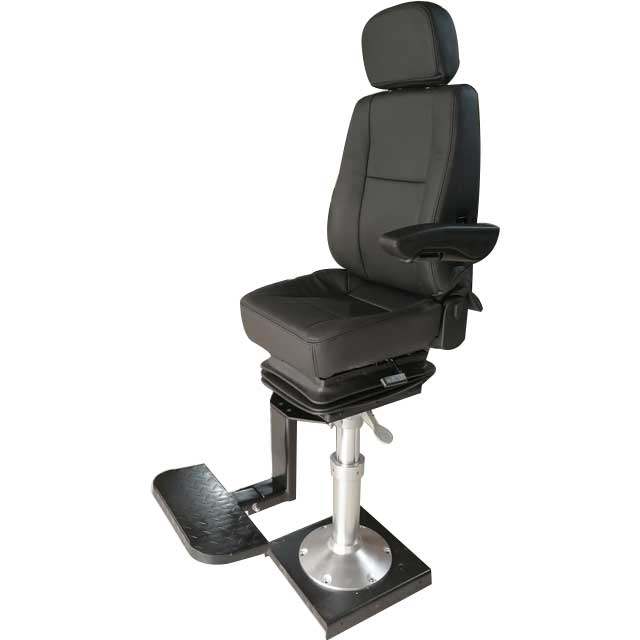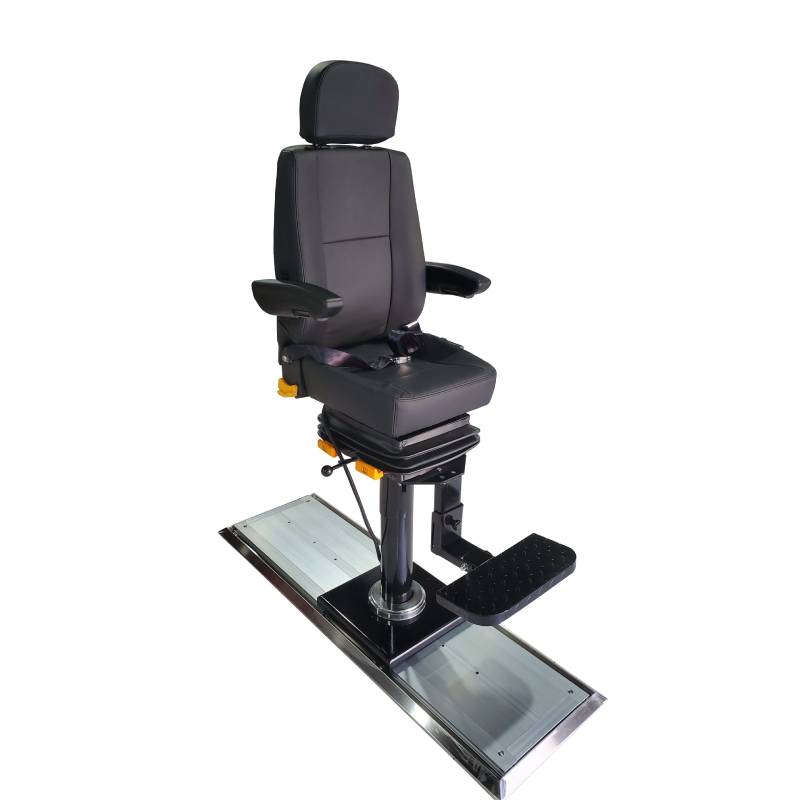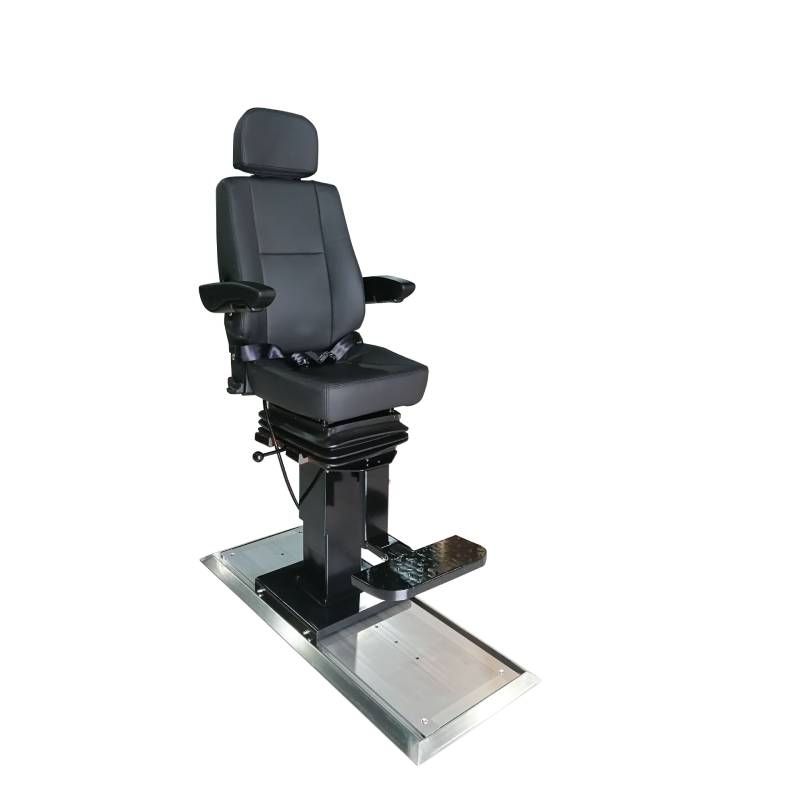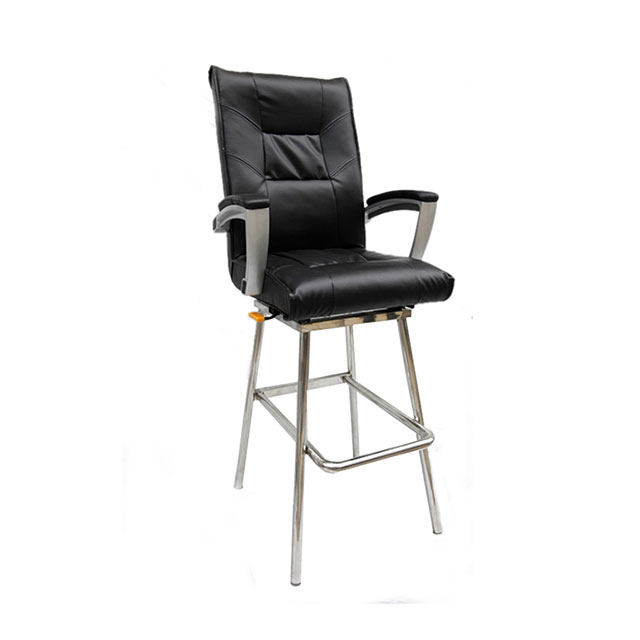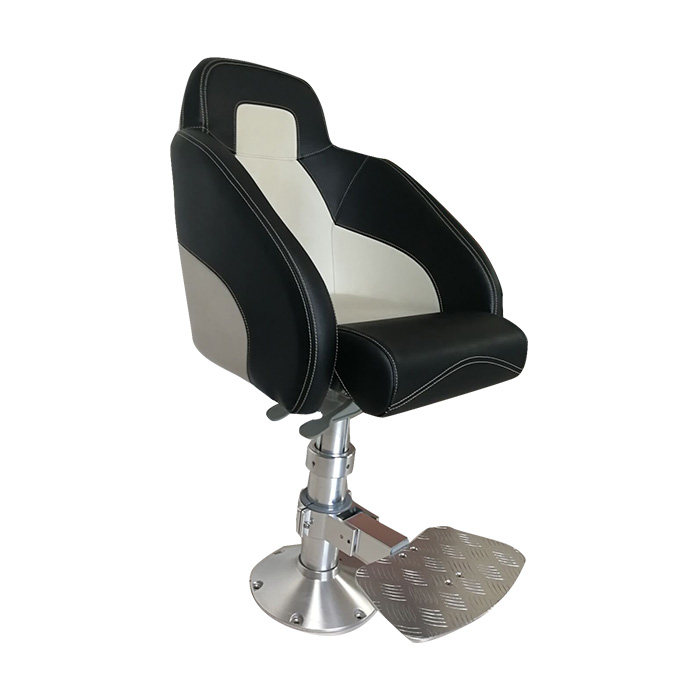How to Reduce Weight in Marine Pilot Chairs
Marine pilot chairs are crucial in ensuring that the operator is comfortable, safe and efficiency on ships, offshore rigs and navel vessels. But traditional boat pilot chairs tend to be heavy, resulting in increased fuel consumption, installation complexity and the strain on ergonomics. Recent advancements in design and materials have led to a shift towards lightweight and durable seating solutions without sacrificing strength or functionality. This article focuses on the latest strategies for reducing weight in marine pilot chairs, covering material innovation, structural optimization and future trends in lightweight ship pilot chairs.
Table of Contents
Why Reducing Weight in Marine Pilot Chairs Is Necessary
Enhancing Fuel Efficiency and Vessel Performance
Weight is a crucial factor in determining a vessel’s energy consumption. The lighter equipment onboard, such as pilot chairs, result in smaller displacement overall and helps to reduce resistance to hydrodynamics. Even slight weight reductions can yield significant savings in fuel during long trips, especially for smaller or high-speed vessels in which efficiency margins are limited. This can directly impact the reduction of the operating expenses and carbon emissions.
Easing Installation and Maintenance
The weight of heavy chairs can cause problems in repositioning and installation which requires more workers as well as lifting equipment and time. Reduced burden of pilot chairs makes it easier for handling, which allows for easier integration into the interior of vessels as well as shorter downtime for retrofitting and maintenance. This is particularly useful in the marine environment that is dynamic where responsiveness and efficiency are crucial.
Improving Crew Safety and Ergonomics
Marine captain’s chairs have been made to allow for long periods of sitting for monitoring and navigation tasks. Lighter chairs can integrate modern ergonomic features more efficiently without burdening the vessel with additional weight. Lighter weights allow for the use of materials that absorb shock and intelligent adjustability mechanisms that increase the comfort of users and decrease fatigue. This directly benefits the health of the crew and operational efficiency.
Improving Design Flexibility
A more compact chair structure offers designers greater flexibility to alter the seating arrangement in the control or bridge rooms. This is especially important for modern vessel interiors where space is constrained and multi-functional equipment is now a standard. Weight reduction allows for flexible or rotating configurations that increase the efficiency of space without compromising functionality.
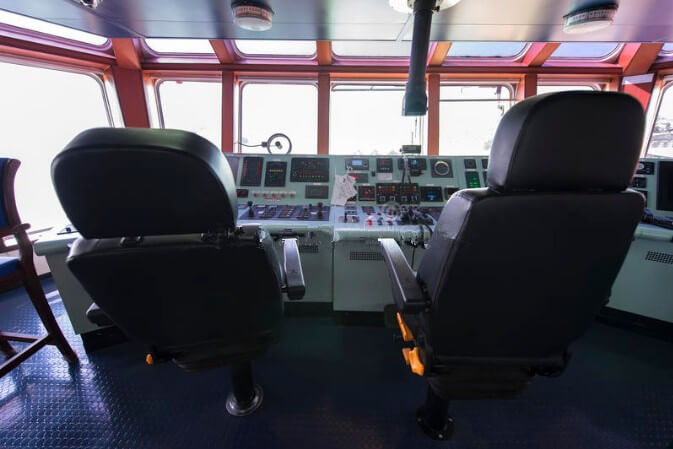
Supporting Sustainable Shipbuilding
The maritime industry is constantly under pressure to make greener choices by utilizing recyclable and lightweight components in the construction of pilot chairs will help meet global sustainability standards. In general, reducing the weight of a chair is in tandem with using less raw materials, reducing the energy used in production, as well as enhancing the recyclability of end-of-life products.
Maintaining Vessel Stability
In certain vessels, especially smaller vessels or those with superstructures that are high, excess weight above deck can cause problems with stability. The reduction in the weight of pilot chairs allows for the center of gravity lower and improves overall stability of the vessel as well as security during operations when sailing in turbulent seas.
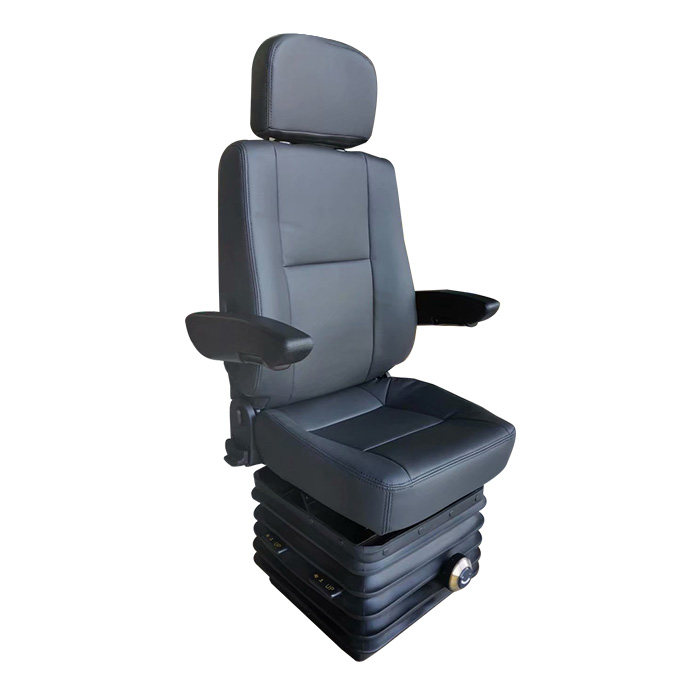
Advanced Materials for Weight Reduction in Marine Pilot Chairs
The most efficient methods to achieve this goal is through the use of advanced materials. They have high strength-to-weight ratios, superior resistance to corrosion and the flexibility required to meet the demands of harsh marine environments, without losing the structural integrity or comfort.
1. Aluminum Alloys
The aluminum alloy is among the frequently employed materials for reducing their weight in marine chairs. Their popularity stems from a combination of lightness, strength, and natural resistance to corrosion–especially when treated with anodizing or powder coating.
In comparison to conventional steel frames Aluminum alloys can cut the burden of a chair’s structure by as much as 40 percent. Although it is light it is extremely durable and can support complex manufacturing which makes it a great material to make adjustable parts such as footrests and armrests.
2. Carbon Fiber-Reinforced Polymer (CFRP)
Carbon fiber reinforced polymer is regarded as to be a high-performance component in the development of light marine components. Although it’s more costly than metals, it offers unparalleled stiffness and strength with a fraction of the weight.
Its remarkable resistance to fatigue and lack of corrosion makes it ideal for chairs that are exposed to temperature fluctuations and saltwater. CFRP also permits modern, sleek designs that feature aerodynamic shapes and support systems that are integrated. The material is being increasingly utilized in high-end pilot chairs that require high durability, light weight and aesthetics are essential.
3. Magnesium Alloys
Magnesium alloys are being touted as a new solution for applications that require weight, and offer more reduction in weight than aluminum. They’re 33 percent lighter than aluminum but have a decent mechanical strength for structural components.
However, the use of magnesium is limited because of its greater vulnerability to corrosion and flammability. These require specialized coatings and precautions in design. When properly treated, magnesium components–especially in non-load-bearing areas–can significantly reduce total chair weight without sacrificing safety.
4. Thermoplastic Composites
Thermoplastic composites, which are often strengthened with carbon or glass fibers, are getting recognition for their recyclability and speedy manufacturing capabilities. They offer their flexibility, durability, and also a smaller footprint on the environment.
They are usually utilized in the second-tier parts of the pilot chair like sides panels, casings as well as armrest shells. Their flexibility and formability allow them to create ergonomic designs while reducing mass.
5. High-Performance Foams
The reduction in weight isn’t just limited to structural parts. The comfort of seating can also be improved with the use of advanced foams. High-resilience polyurethane or viscoelastic memory cushions give great comfort and support, while being light. Certain newer formulations are packed with gel or phase change materials to increase thermal regulation and ensure that the operator is comfortable during long trips.
6. Hybrid Material Combinations
In order to maximize efficiency and save money Many manufacturers employ a hybrid strategy, which combines aluminium frames and carbon fiber reinforced, or mixing thermoplastic shells and metal supports. The combination of these materials leverages the unique strengths of each material creating a chair that is durable, lightweight as well as suitable for use with a broad selection of vessel styles.
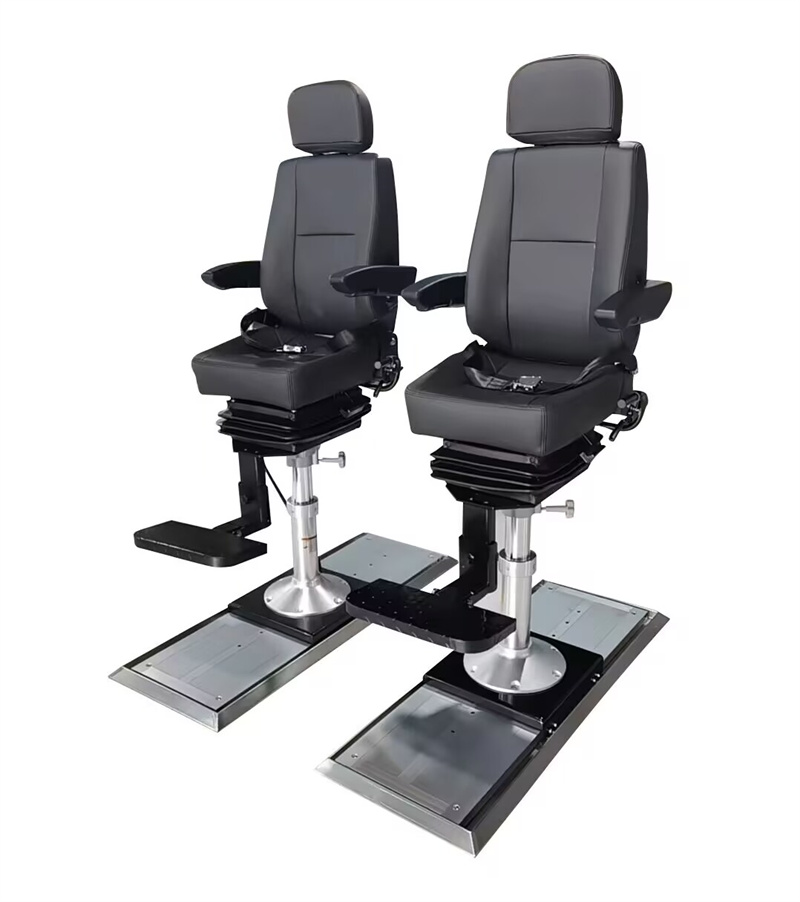
Structural Optimization Techniques for Reducing Weight in Marine Pilot Chairs
Beyond focusing on light material, designers are using structural optimization techniques to reduce weight and achieve maximal efficiency in boat pilot chair, without compromising the safety of their work or ergonomics.
1. Topology Optimization
A very efficient methods for reducing the weight of structural components is optimization of topology. This technique of computer-aided engineering involves simulating load conditions in order to determine which parts of a structure are necessary to its strength and those that can be safely eliminated. For chairs that are used for marine pilots This technique allows designers to eliminate excess material from the frame or base, while keeping the rigidity and strength.
For instance an aluminum or steel chair support can be altered to create voids or thicker walls in areas with low stress. This results in a slim but sturdy design that reduces the amount of material used while ensuring that the chair is able to withstand the impacts and vibrations that come from the vessel that is moving.
2. Finite Element Analysis (FEA)
The Finite Element Analysis is commonly employed together with topology optimization to verify the structural strength of a brand new chair. FEA splits the chair into tiny elements, and then evaluates the way each one reacts to the forces, vibrations and the effects of fatigue.
Through conducting FEA simulations in the early stages of the design process, engineers are able to determine areas where structural thickness could be decreased or where more reinforcement is required that can lead to forms that are highly optimized and are strong, secure and lightweight.
3. Hollow and Ribbed Structural Design
The replacement of solid components by hollow sections, or internal ribbings is a commonly used method to reduce weight. For instance, instead of having a solid armrest and base, engineers could make hollow tubing that has carefully placed internal ribs which give the structure more rigidity.
This technique is often employed in chairs as well as footrests and swing supports. It dramatically reduces the use of raw materials while maintaining the mechanical strength needed for daily use in harsh sea conditions.
4. Integrated Multi-Function Components
The weight can be decreased by combining several tasks into a single component. For instance, instead of having different rails, mounting brackets and adjusters, designers can create a single machined made component that can fulfill all these purposes. This is not just a reduction in number of parts, but also decreases the use of fasteners and overall assembly weight.
These integrated solutions also increase reliability by removing connections and joints that could fail due to stress or exposure to corrosion.
5. Parametric and Generative Design
Parametric design lets engineers input design variables such as load, weight and movement range, and then automatically adjust the design of chair components. This makes sure that the design will always be designed to be optimal for the specific circumstances. When paired with design algorithms that generate generative designs, the software is able to design completely different shapes that human designers would not have thought of with biomimetic shapes which are extremely powerful and light.
These methods allow rapid prototyping of chair components that are able to meet performance goals while reducing weight.

6. Use of Lightweight Fastening and Joint Methods
Structural optimization is also about changing the way you connect and use fasteners. Metal joints and bolts that are heavy-duty could be substituted with lighter devices for locking mechanically, snap-fit styles or even more advanced adhesives. These alternatives eliminate the need for hardware made of metal that adds the weight and the risk of corrosion.
Advanced joining techniques reduce the requirement for overlapping of materials and allow elements to be connected edge-toedge or within sockets that are integrated, further reducing weight.
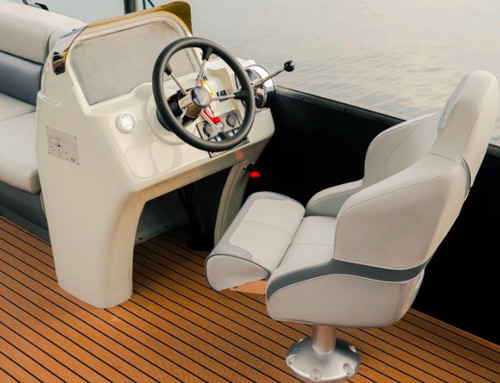
Balanced Lightweight Design and Durability with the Marine Pilot Chairs
This chart shows how lightweight marine pilot chairs should be created with a balanced view using advanced engineering techniques to ensure long-term durability for captain’s seats while achieving efficient weight reduction.
| Design Element | Lightweight Objective | Durability Challenge | Balancing Strategy |
| Material Selection | Utilize lighter materials such as carbon fiber, aluminum, or magnesium | Risque of wear, corrosion or fatigue of material | Select composites or alloys treated with protective coatings |
| Structural Thickness | Reduce the thickness of components to help reduce weight | Thinner parts can be damaged or deformed in the face of repeated stress | Only apply reinforcement to crucial load-bearing points |
| Fastening & Joints | Make use of fewer or less powerful fasteners | The mechanical integrity may be compromised over time. | Use optimized joint designs (e.g., interlocking, adhesive bonding) |
| Frame Design | Frame geometry should be simplified and eliminated excessive volume | Might reduce structural resiliency in the event of a collision or dynamic load | Make use of FEA as well as topology optimization in order to strengthen the stress points |
| Surface Treatment | Reduce coating layers in order to decrease the weight | Less protection against marine corrosion | Apply high-performance thin-layer coatings (e.g. ceramic, nano) |
| Moving Parts & Mechanisms | Reduce the complexity of mechanical components and reduce component counts | The parts that are more simple may be more worn out under repeated adjustments | Make use of durable, low-friction and long-lasting materials (e.g. joint PTFE-lined with PTFE) |
| Environmental Resistance | Utilize lightweight polymers or thin metals | Resistant to saltwater, UV and extreme temperatures. | Tested under conditions of marine-grade material an accelerated aging process |
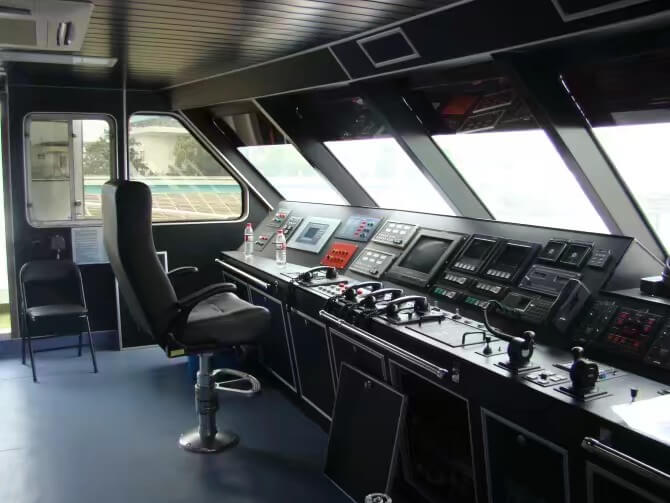
Future Trends in Lightweight Marine Pilot Chairs
As maritime vessel sector become more sophisticated in specifications for design and performance, lightweight marine pilot chairs isn’t just about saving weight and it represents a wider shift towards sustainability, intelligent design, and enhanced operator functionality.
1. Integration of Smart Materials
One trend that is emerging is the development in the development of materials with smart properties that react dynamically to the environment. Shape-memory alloys, temperature-sensitive polymers, and vibration-dampening composites will allow pilot chairs to adjust their stiffness or cushioning automatically, depending on motion and body heat. This makes chairs light while also providing comfort and support, without the need for large mechanical systems.
2. Expanded Use of Additive Manufacturing (3D Printing)
Additive manufacturing is expected to transform the production process of chairs for marine pilots. With 3D printing, companies can design complex lattice structures and hollow forms that significantly reduce weight, while still retaining the strength of the structure. This process also allows scaling-based customization, which allows chairs to be customized to specific designs for bridges or ergonomics with the least amount of waste.
3. Modular and Collapsible Designs
The future marine pilot chair could comprise modular components that are able to be assembled, changed or upgraded. Some models might have folding or collapsible elements to allow to make space for smaller bridges, or for unmanned vessels. Modular designs do not just reduce weight by removing unnecessary structure, but also enhance maintenance and the efficiency of lifecycle.
4. Bio-Inspired Structural Engineering
The inspiration for this is nature’s light yet robust designs (such as honeycomb shells and bird bones) marine chair engineers are using bio-inspired geometries. They can create frameworks and supporting structures which offer outstanding strength-to-weight ratios, which reduce the amount of material used while ensuring the safety of users under extremely heavy loads.
5. Advanced Composite Materials
A new generation of chairs for pilots will use hybrid composites, which combine carbon, aramid fibre, and thermoplastics to achieve the perfect balance between cost, weight, and performance. The advanced composites will further be enhanced by nano-coatings that resist UV and saltwater protection as well as longer service lives.
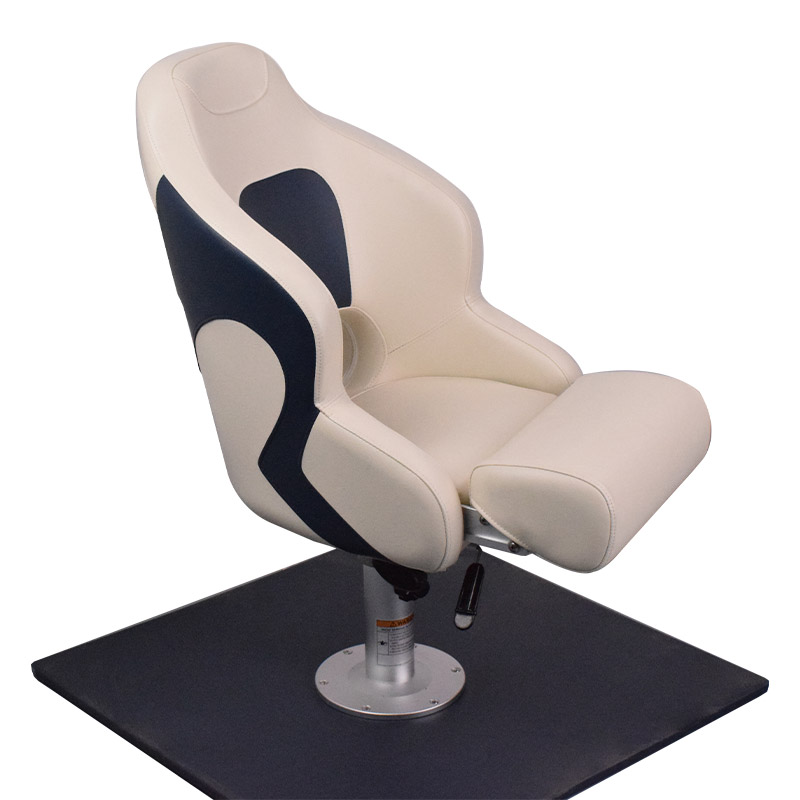
6. Embedded Sensors and Health Monitoring
As part of the larger shift towards intelligent vessels, pilot chairs could incorporate sensors embedded in them that will examine occupant positions, vibration exposure and fatigue. These systems can help avoid injuries during long shifts in navigation and could provide real-time information to schedule maintenance. All of this could be integrated into lighter designs with printed electronics as well as wireless modules.
7. Sustainability and Eco-Design Principles
Sustainable design is an increasing important issue. Future pilot chairs that are lightweight will increasingly make use of bio-based and recycled materials, like flax fiber composites and biodegradable polymers. Manufacturers are also likely to adopt cradle-to cradle design principles, which will ensure that chairs can be removed and reused at the end of their lives with little environmental impact.
8. Seamless Integration Autonomous and Smart Navigation Systems
As bridges become increasingly automated and autonomous systems assume essential roles marine pilot chairs are expected into interactive workstations rather than seats that are passive. Chairs with a lighter weight will work seamlessly with controls, head-up displays as well as navigation tools that are based on gestures eliminating the requirement for separate consoles, and permitting additional weight and space savings.
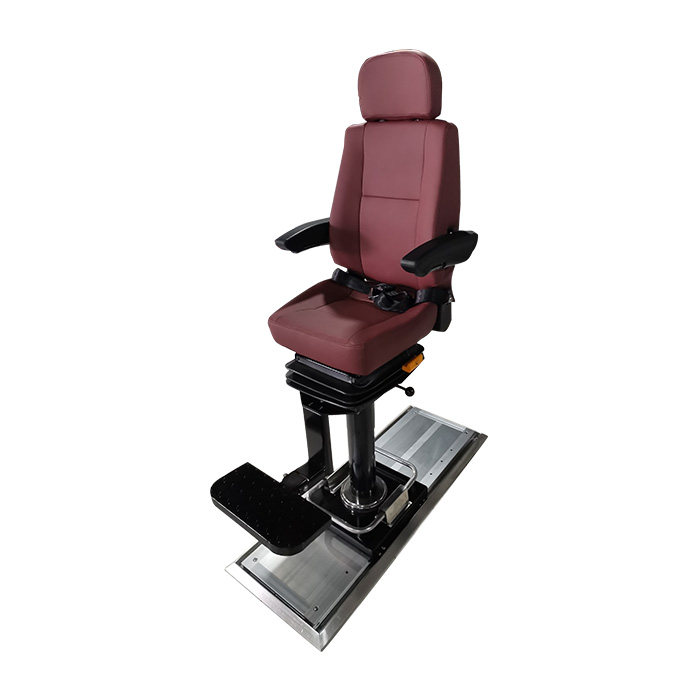
Final Thoughts
Reducing weight in marine pilot chairs is no longer just about cutting costs and it’s about increasing efficiency in safety, comfort, and efficiency while ensuring compliance with stringent maritime regulations. Through the use of the advanced composites, aluminum alloys and structural optimization, marine equipment manufacturers are able to provide high-performance marine captain’s seats that is beneficial to ship operators across industries.


